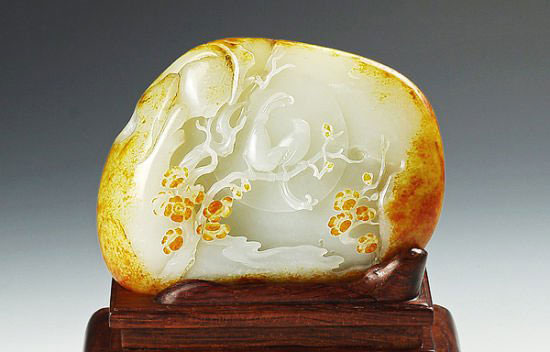In Chinese traditional culture, jade is a cultural carrier that combines aesthetics and virtue. Jade culture is also an important embodiment of the spirit of the Chinese nation, symbolizing the quality of the "modest and gentleman" in traditional culture. The artistic beauty and cultural connotation of jade articles cannot be separated from the carvings of skilled craftsmen. So how did the ancients process jade? The first is the choice of materials, the quality of jade directly affects the artistic value of the work. After the West Han Chinese and foreign trade and convenience, the Western Regions of the United States gradually came to the east, the jade of the Western Regions was warm and transparent, especially Hetian Yu was the most popular, and the arrival of the jade also laid a solid foundation for the development of Chinese jade carvings. The technique of jade carving is recorded in "The Book of Songs, Wei Feng·Qi Ou": "If you cut it like a book, such as ç¢ ç¢ ç£¨." Jade carving belongs to the "subtraction" carving, you need to have a certain grasp of the whole, so the jade carving is first of all Rough carving, and then use the techniques of line engraving, embossing, hollowing, drilling, live ring, hidden, polishing and other fine carvings. The last process - grinding, using soft wood chips, gourd skin, cowhide and other materials, smashed with pearl mortar, after repeated polishing, so that the jade has a gelatinous luster. In China's jade carving technique, there is also a unique feature, that is, "fancy color." Some jade materials have some variegated colors, but it is a pity that the craftsmen design based on the shape and color of the mottled parts. In the Qing Dynasty, the jade carving "Jade Clay Cabbage" adopted such techniques. The roots of cabbage are basically white, while the tops of the cabbages and the shape of the dragonflies are expressed in the yellow and green colors of the jade, which shapes the texture of the cabbage after the frost and the scene when the green dragonfly eats the cabbage, which is very natural and interesting. Since jade materials are rare in ancient times, it is necessary to avoid the occurrence of discarded materials during creation. Craftsmen need to rethink and turn waste into treasure. For example, in the Qing Dynasty, "White Jade Twisted Lady", it was originally made of bowl scrap, but the craftsmen worked with the shape, and the part to be taken was designed as a half-masked moon door shape, and two ladies look. The door stands, one person holds the wishfulness, and the other holds the object with both hands, skillfully combining the physical movements of the characters with the waste, and the shape is unique. The change from flat embossed lines to three-dimensional perspectives has increased the sense of depth. This piece of jade has also won the appreciation of the Emperor Qianlong. Microfiber Travel Towel,Microfiber Car Cloths,Microfiber Suede Towel,Microfiber Cooling Towels Wujiang Rongchao Silk Co., Ltd , https://www.wujiangrongchao.com